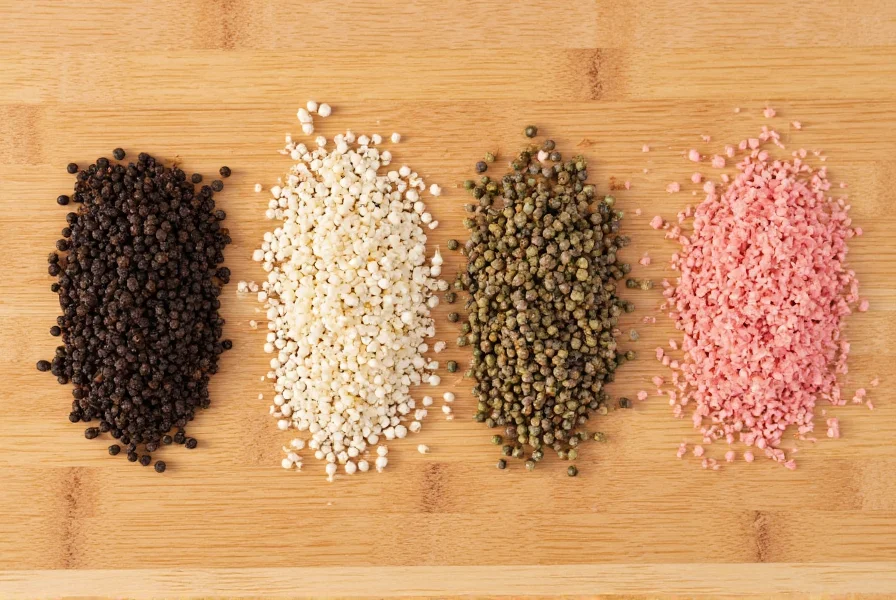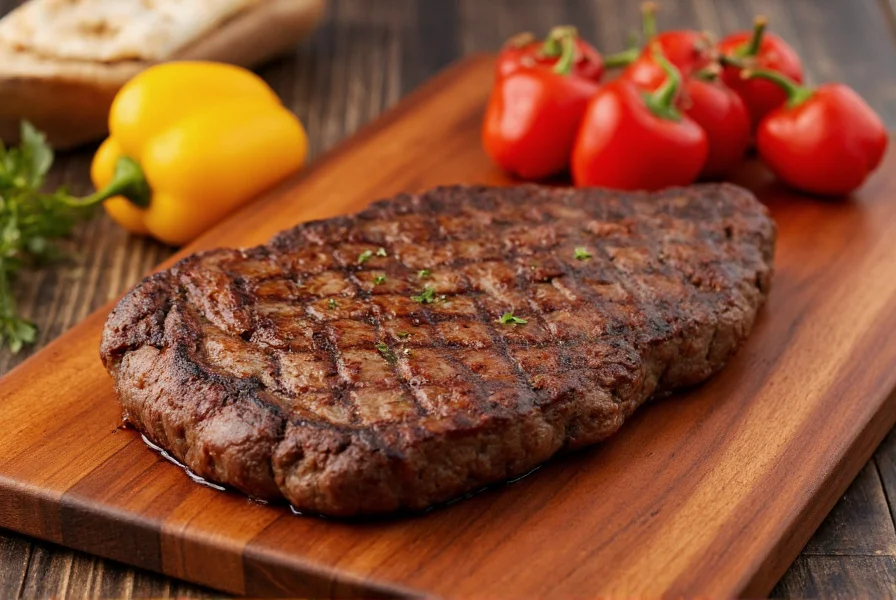Pepper and beef steak form one of the most classic culinary partnerships in cooking history. Understanding how to properly use pepper with steak transforms a simple meal into a restaurant-quality experience. This guide explores the science, techniques, and traditions behind the perfect pepper-seasoned steak.
The Science Behind Pepper and Steak Pairing
Black pepper contains piperine, a compound that enhances savory flavors through a process called flavor synergy. When combined with the umami-rich proteins in beef, piperine amplifies the meat's natural taste without masking it. Unlike many spices, pepper doesn't compete with beef's flavor profile—it complements it.
Contrary to popular belief, applying pepper before cooking doesn't cause burning if done correctly. The key is using coarse cracked pepper rather than fine powder, which has more surface area and burns more easily. Coarse pepper maintains its integrity during the high-heat searing process that creates the perfect crust on steak.
Types of Pepper for Steak: A Comparative Analysis
| Pepper Type | Flavor Profile | Best Steak Pairings | Recommended Use |
|---|---|---|---|
| Black Peppercorns (Tellicherry) | Robust, complex, floral notes | Ribeye, New York Strip | Cracked coarse, applied 40+ minutes before cooking |
| White Peppercorns | Milder, earthier, less citrus | Fillet Mignon, lean cuts | Fine grind, added during final cooking minutes |
| Green Peppercorns | Fresh, herbal, slightly fruity | Filet, delicate cuts | Soaked and crushed, used in pan sauces |
| Szechuan Peppercorns | Citrusy, floral, numbing sensation | Thin cuts, stir-fry preparations | Light dusting after cooking |
Timing Matters: When to Apply Pepper to Steak
The timing of pepper application significantly affects flavor development. Research shows three distinct approaches with different outcomes:
- Pre-Salt Method (40+ minutes before cooking): Applying coarse pepper along with salt well before cooking allows flavors to penetrate the meat's surface. The salt draws out moisture, which then dissolves the pepper compounds, creating a flavorful brine that's reabsorbed.
- Mid-Cook Application: Adding pepper during the cooking process creates a more pronounced crust with integrated pepper flavor, but risks slight burning if using fine pepper.
- Post-Cook Finish: Sprinkling freshly cracked pepper immediately after cooking preserves its volatile aromatic compounds, providing the most intense pepper aroma.
For most home cooking scenarios, the pre-salt method delivers the most balanced flavor profile. Reserve post-cook finishing for special occasions when maximum aromatic impact is desired.
Mastering Steak au Poivre: The Classic Pepper Preparation
Steak au poivre, the French "pepper steak," represents the pinnacle of pepper-steak preparation. This technique requires specific execution:
- Use a generous 1-2 tablespoons of mixed peppercorns per 8-ounce steak
- Gently press the pepper into the meat's surface after salting
- Cook in clarified butter (not oil) for optimal flavor transfer
- Create a pan sauce using cognac and reduced beef stock
The critical mistake many home cooks make is applying too much pressure when pressing pepper into the steak, which forces the pepper too deep and creates an overwhelming heat. Instead, use a light pressing motion that allows the pepper to adhere without embedding.

Pepper Measurement Guide for Different Steak Cuts
Not all steaks require the same pepper treatment. The ideal pepper-to-meat ratio varies based on cut thickness, fat content, and inherent flavor intensity:
- Ribeye (1-1.5 inches thick): 1.5 tablespoons coarse pepper per side - the marbling absorbs more seasoning
- New York Strip (1.25 inches): 1 tablespoon coarse pepper per side - balanced approach for this versatile cut
- Fillet Mignon (1.5-2 inches): 2 teaspoons fine white pepper per side - delicate flavor requires subtlety
- Skirt Steak (thin cut): 1 teaspoon mixed pepper per side - applied after cooking to prevent burning
Avoiding Common Pepper Steak Mistakes
Even experienced cooks make these frequent errors when preparing pepper steak:
- Burning the pepper: Using fine ground pepper or applying too early in high-heat cooking
- Overpowering the beef: Using excessive amounts that mask the steak's natural flavor
- Mixing with other strong spices: Combining pepper with competing flavors like garlic powder or onion powder
- Using stale pepper: Old pepper loses its volatile compounds and becomes bitter
Freshly cracked pepper should have a distinctive floral aroma. If your pepper smells musty or lacks fragrance, it's past its prime. Store peppercorns in an airtight container away from light and heat to maintain freshness for up to 1 year.

Complementary Ingredients for Pepper Steak
While pepper shines brightest when used simply with quality beef, certain ingredients enhance the pairing:
- High-fat finishing butter: Adds richness that carries pepper flavors
- Shallots: Milder than onions, they complement without competing
- Brandy or cognac: Creates a flavorful pan sauce that integrates pepper notes
- Thyme: Earthy herb that harmonizes with pepper's floral notes
Remember that the goal is to enhance, not mask, the natural beef flavor. The best pepper steak preparations let the quality of the meat shine through, with pepper serving as the perfect supporting player.
FAQ: Frequently Asked Questions About Beef Steak Pepper
Should I put pepper on steak before or after cooking?
For optimal flavor, apply coarse cracked pepper at least 40 minutes before cooking along with salt. This allows the pepper compounds to penetrate the meat's surface. Avoid fine ground pepper before cooking as it may burn during high-heat searing. Reserve additional freshly cracked pepper for finishing after cooking if desired.
Why does my pepper burn when cooking steak?
Pepper burns due to three main reasons: using fine ground pepper instead of coarse cracked, applying pepper too early in the cooking process, or cooking at excessively high temperatures. Coarse pepper has less surface area exposed to heat, reducing burning. The ideal approach is to use freshly cracked coarse pepper and ensure your pan isn't smoking hot when the steak hits it.
What's the difference between black pepper and white pepper for steak?
Black pepper has a more robust, complex flavor with floral and citrus notes, making it ideal for most steak preparations. White pepper is milder, earthier, and lacks the citrus notes, working better with delicate cuts like filet mignon. Black pepper contains piperine in both the outer layer and seed, while white pepper (which is just the seed) has a different chemical composition that creates a smoother heat profile.
How much pepper should I use for a standard 8-ounce steak?
For an 8-ounce steak, use approximately 1-1.5 tablespoons of freshly cracked coarse black pepper per side for ribeye or New York strip cuts. For more delicate cuts like filet mignon, reduce to 1-2 teaspoons of fine white pepper per side. The key is to see a visible but not overwhelming coating of pepper on the steak's surface.
Can I use pre-ground pepper for steak?
While convenient, pre-ground pepper lacks the flavor complexity and aromatic compounds of freshly cracked pepper. Pre-ground pepper often contains anti-caking agents and has lost its volatile oils through oxidation. For the best results, always use whole peppercorns and crack them immediately before application. A simple pepper mill provides significantly better flavor than pre-ground options.











 浙公网安备
33010002000092号
浙公网安备
33010002000092号 浙B2-20120091-4
浙B2-20120091-4